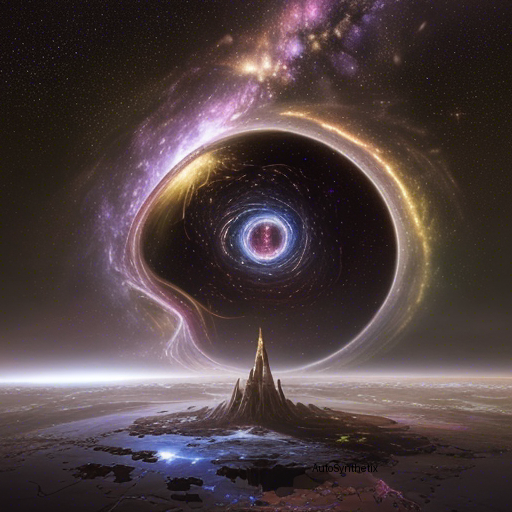In our ever-expanding quest to understand the cosmos, researchers constantly push boundaries seeking answers hidden within astronomical phenomena. A groundbreaking study published recently dives deep into examining dark matter at small scales, utilizing cutting-edge observatories such as the European Space Agency's (ESA) Gaia mission's third data set known as 'Gaia DR3'. This work spearheaded by renowned scientists Cristina Mondino, Andreas Tsantilas, Anna-Maria Taki, Ken Van Tilburg, Neal Weiner aims to explore the elusive universe of dark matter substructures lurking in the depths of the Milky Way galaxy.
Dark matter remains a perplexing enigma due largely to its inherently invisible nature. Conventional methods relying upon electromagnetic radiation emitted by celestial bodies fail here since these mysterious entities do not emit light. However, the intricate dance of gravity offers a glimmer of hope. Gravitational interactions serve as indelible signposts pointing towards the presence of dark matter objects. One particular manifestation termed "weak gravitational lensing" captures scientific interest because of its potential in revealing clues regarding minute dark matter configurations embedded amid the vastness of space.
This ambitious research initiative sets off exploring astrometric weak lensing - a novel application of Gaia's extensive cataloguing capabilities for unearthing subtle signs indicative of tiny dark matter concentrations residing near the Milky Way periphery. By employing sophisticated mathematical techniques rooted in signal processing theory christened Matched Filter Analysis, they scrutinized the movements recorded in over two million stars situated around the Large & Small Magellanic clouds. These celestial neighbours function ideally as natural laboratories owing to their proximity and relative simplicity compared to more complex galactic systems.
During the course of their investigation, the team managed to rule out substantial quantities of substructural components weighing anywhere between approximately ten seven to ten nine times Earth's Solar Mass, having dimensions no larger than a single parsecs worth roughly three hundred trillion kilometers. Encouragingly enough, subsequent estimations suggest forthcoming Gaia DR4 dataset could potentially allow them to detect traces of even tinier dark matter clusters down to mere thousandths fraction levels within the lower end spectrum spanning from tens of individual Sunlike masses up till several thousands thereof.
Fascinatingly, another proposed strategy involves studying cumulative effects arising out of myriad microcosmic encounters dubbed "stacked star-star lensing". While current implementations fall short in terms of sensitivity needed to deliver conclusive findings, such a framework holds immense promise serving both diagnostic tools honing understanding mechanisms underpinning observed patterns while simultaneously functioning as critical benchmarking aids paving way toward refinement procedures eventually leading us closer to unlocking mysteries shrouded behind dark matter conundrums.
As humankind continues pushing technological frontiers, every successive step brings us tantalizingly close to demystifying some of cosmological riddles. With advanced instruments like Gaia offering unprecedented insights into distant celestial realms, the next chapter unfolding before our collective endeavor promises nothing less than revolutionary revelations illuminating the very essence of existence itself.
References: For detailed technical exposition refer to the original publication titled “Astrometric Weak Lensing with Gaia DR3...” available online via arXiv repository.
Source arXiv: http://arxiv.org/abs/2308.12330v2
